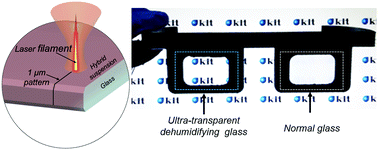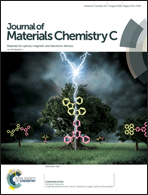Laser filament bottom-up growth sintering for multi-planar diffraction-limit printing and its application to ultra-transparent wearable thermo-electronics†
Abstract
We report a novel cost-effective digital fabrication method for the production of high resolution electrodes of 1 μm-grade width on multiple planes connected at an angle using an affordable light source. This was achieved by the laser filament growth sintering of nanoseed/organometallic hybrid precursors, which were reformulated from a low-cost, particle-free, ionic organometallic solution. Growth sintering of the hybrid precursor, which creates solid electrodes through the sequential thermo-chemical interactions of nucleation, clustering, thermal growth, and aggregation, improves the conductivity and resolution of the electrodes via bottom-up thermal crystallization and stable chemical transition processes. The laser filament with a Bessel profile, which was modulated from a conventional low-cost laser with a Gaussian profile, localizes the growth sintering interaction within a transversely elongated focusing area close to the diffraction limit, unlike the very narrow focusing area in typical laser optics. As a result, this method enabled the fabrication of an ultra-transparent conductor with a transmittance of more than 97% in the visible spectrum. The electrodes were completely invisible to the naked eye, even when viewed at close range. A transparent micro-heater for humidity-free smart glasses was successfully fabricated to demonstrate the potential of one-step manufacturing of functional wearable devices.



 Please wait while we load your content...
Please wait while we load your content...